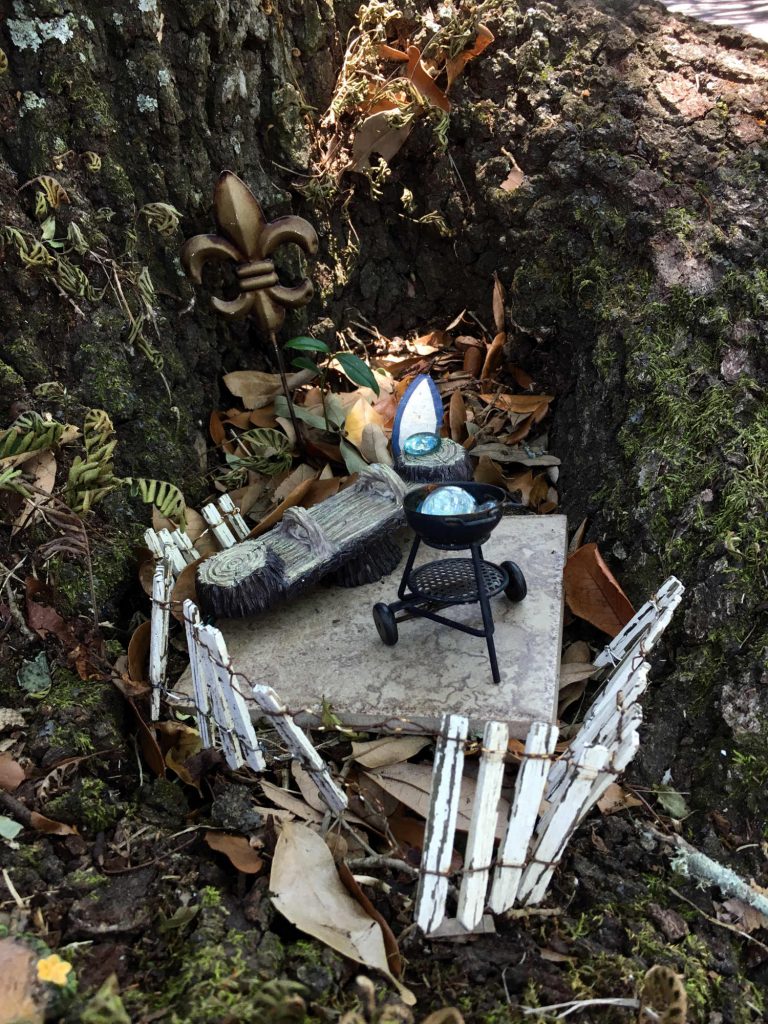Backyard Magic
Here’s how to create a sensory garden with children.
 “You love plants more than you love me,” my seven year old whined when I wouldn’t budge from our little community garden plot to watch him master the monkey bars …again. While untrue, he had a point. I have worked in gardening programs with kids of all ages and yet I had left my own child behind for years. After thinking over the more successful projects with elementary aged kids, a sensory garden seemed like the perfect project to get him interested enough to work with me, while livening a corner of our outdoor space.
“You love plants more than you love me,” my seven year old whined when I wouldn’t budge from our little community garden plot to watch him master the monkey bars …again. While untrue, he had a point. I have worked in gardening programs with kids of all ages and yet I had left my own child behind for years. After thinking over the more successful projects with elementary aged kids, a sensory garden seemed like the perfect project to get him interested enough to work with me, while livening a corner of our outdoor space.
A sensory garden is a space designed with the purpose of stimulating the senses. Commonly used in Montessori classrooms and institutions serving people with disabilities or healing from trauma, sensory gardens are especially great for curious children. Using bright colors, intense smells, unique foliage texture and shape, and some edibles placed in unexpected places, sensory gardens are the perfect hands-on introduction to New Orleans’ amazing backyard ecology.
These creativity-inspiring gardens can take up an entire yard, complete with winding pathways to secret scented enclaves and tiny habitats for frogs or dragonflies — or it can be as small as a windowsill. Container gardens on patios or porches are an excellent and organized way to start this project if you choose to do it yourself.
The Senses Through the Seasons
When choosing plants, the climate and season must be considered above all else. Soil can be amended with compost and mulched for moisture retention, but watermelon will not grow outdoors in the winter. We’ve tried a thousand times. Perennial natives are also preferable, as they will come back year after year, and beneficial insects and birds (like those that eat mosquitos) will come to rely on these plants.
Late summer is a difficult time to plant low-maintenance plants but a great time to start seeds with kids. High soil temperatures and frequent rains allow for fast germinating seeds that children won’t forget about before they sprout. For brilliant fall color, pluck spent flowers (seed heads) from common plants around town such as blanket flower, coneflower, black-eyed Susan and salvias. Rub the dried flower between fingertips and the seeds will fall out, cover with an inch of soil and keep moist.
To keep those man-made late summer smells at bay (like the trash bin after a crab boil), lantana, Artemesia, lavender, rosemary and chocolate mint are great “scratch and sniff” options. If there are citrus trees nearby, pluck a few leaves off and smell. One child asked me if God stole the scent from a box of Fruit Loops cereal.
Plants that encourage touching are fuzzy lamb’s ear, dusty miller and yarrow. Succulents that can be gently touched are great for comparisons: thin versus thick; waxy versus rough; etc. Aloe is a great choice, as it has medicinal and cosmetic uses; fleshy leaves with sharp edges that are interesting to the touch; and they can be grown indoors or outdoors.
Taste is something small children don’t generally need much encouragement with, but it does seem as if a child finds a tomato or cucumber unexpectedly in the garden it is infinitely more appealing than if Mom puts it on a plate. Edible flowers such as nasturtium and squash blossoms have large seeds for tiny, clumsy hands and can be planted for fall harvest. Beans, peas and potatoes are also large and sprout quickly.
Accessorizing and Customizing
Bird feeders, wind chimes, and other garden art from recycled materials are all cheap, easy and fun projects to do with children. Or set them up with the materials and let them go it alone. Painting rocks to look like bees, ladybugs or other good bugs is fun for toddlers, and older children can practice alphabet letters by making plant labels with stamps. As an added benefit, parents can add gardening tasks to their children’s Saturday morning chore list and be amazed at the distractions a child can experience without a screen.
To find these plants or more information, visit area plant nurseries like Urban Roots on Tchoupitoulas Street (where customers can pet goats and rabbits). Bantings Nursery in Bridge City has a very knowledgeable horticulturalist on staff to answer any questions, as does the seasonal Herb Society sales held at the Botanical Garden. The monthly sales at the Pelican House directly support growers in southeast Louisiana as opposed to commercial nurseries, which import plants from all over the country and world.
Some excellent seed companies that focus on diverse plants suitable for the South are Sow True Seeds, The Southern Seed Exchange, Seeds Now and Bakers Creek Heirloom Seed Company, all of which will send you free seed catalogues if requested.
